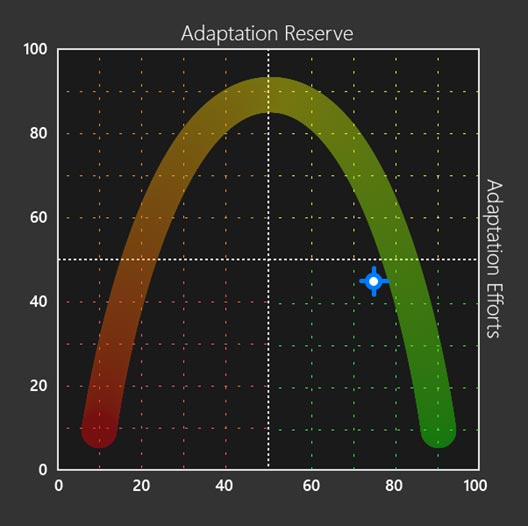About Binacor LLC
Digital Intelligence
Our company was originally founded by a group of professionals having exceptional experience in the field of biomedical electronics and software development coming from their past work in large research and development centers in Russia.
Our goal was to establish a company having flexibility and high-performance in mind to quickly respond to the growing demands in various segments of hi-tech health markets using the cutting edge technologies and advanced biosensor solutions we have developed.

Creating super-miniature electronic components, personal smart devices, and wireless technologies for data transfer at the beginning of this century has made breakthroughs in the field of mobile applications. Therefore the main direction we chose was the design and development of miniature biosensor devices and software for health and fitness applications.
Our main approach is to partner with reputable research groups to study important aspects of human health and performance and come up with new concepts of electronic devices and computer applications with the goal of improving quality of life.
Our well-managed team of experienced analysts, electronic engineers, programmers, and designers, as well as the use of the cutting-edge development technologies, enables us to bring state-of-the-art products to market.

Autonomic Nervous System: Interpretation Problems in Assessment Methods
Autonomic Nervous System (ANS) – the system that controls involuntary and necessary functions of the human body, such as the beating of the heart, metabolic functions, gland secretion, etc. – is a fundamental part of human physiology and our nervous system. Stress is known to be a cause of ANS dysfunction potentially leading to many forms of illnesses, which can be evaluated accurately by measuring Heart-Rate Variability (HRV). HRV became the center of much research conducted during the past few decades and home health devices were built with the aim to report on HRV and similar measurements so people could discover any abnormality in the rhythm of their heart. Such anomalies are difficult to be recorded with accuracy, but products monitoring them have become more improved in design – rather than comprehensive function – as part of garments. HRV is understood to have significant potential in measuring ANS function and cardiovascular function. However, scientists have a difference of opinion regarding the efficacy of the traditional methods used for evaluating the various aspects of HRV.
Problem Statement
Despite being a potential indicator of many health-related problems due to the large array of specific parameters it records, HRV is yet to be used as a significant indicator in practical healthcare. This is due to the fact that experts have varied opinions on the efficacy of traditional methods and instruments that were developed in literature in the past.
Solution
We are introducing a new, comprehensive method for assessing a health state. It was developed to provide health practitioners with an accurate method to assess one’s health state by means of measuring and interpreting standard HRV data. This method is based on a proprietary mathematical algorithm converting the standard HRV data readings into a set of special parameters describing how the body’s inner mechanisms of self-regulation work to achieve a state of homeostasis. We called these parameters as Adaptation Effort (AE) and Adaptation Reserve (AR). AE reflects the intensity of activity of the body regulatory mechanisms in order to adapt to various negative factors and maintain its homeostasis. Many chronic illnesses are associated with chronic stress, which disturbs the homeostasis and activates these mechanisms to restore it. So the stronger chronic stress, the more efforts are taken to adapt. AR reflects how much of the body’s resources available for its efforts to restore the homeostasis. Healthy organisms have high levels of reserves for efficient adaptation. Chronic stress causes the body to spend these reserves in continued efforts to adapt and regain its homeostasis.
When AE and AR readings obtained in a single test are charted on a 2D orthogonal plot, they determine a particular health state the subject was at the test time. Our extensive research showed that if AE and AR readings taken over a long period of time for a large group of subjects with different health conditions are plotted on such chart, they form a cloud resembling an arch and forming four separate clusters. We determined them as four different health states: normal, borderline, early-stage and possible pathology. The following diagram illustrates this concept:

Our method defines the third output parameter called Health State Index. It reflects a projection of the point formed by AE and AR to the arch. Its range is divided into four segments reflecting our defined health states.
Read our full Body-Health-Analyzer-Tech-White-Paper-2019 to understand the background and science behind our technology.
